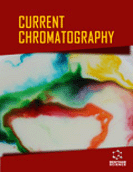Abstract
Background: Expanded Bed Adsorption Chromatography (EBAC) has emerged as a powerful technique in downstream processing mainly for avoiding the need for a clarification step such as filtration or centrifugation, during the initial capture of the target molecule, thus reducing both the step numbers and overall costs as well as increasing productivity. The use of models to represent the EBAC systems is crucial during the process scale-up. Among the many models used to model chromatographic systems it can be cited the phenomenological general rate model (white-box) as the blackbox models as for instance Artificial Neural Network (ANN).
Methods: The goal of this work is to use the general rate model (porous diffusion model) to predict both flow-through as well as washing steps and to use the ANN to predict the chromatogram profile during chitosanase purification protocol using EBAC.
Results: Using the general rate model it was observed that superficial velocity has a major influence on the breakthrough curve compared to axial dispersion as well as the initial enzymatic concentration. Also, change on the effective diffusivity and axial solid coefficient did not change the breakthrough curve profile. A backpropagation-ANN with twelve at hidden layer adjusted the three steps quite well.
Conclusion: Phenomenological models such as the porous diffusion here used depend on parameter estimation. This can be a quite challenge for EBAC since a lot of parameters are involved therefore learning network such as ANN can stand out.
Keywords: ANN, chitosanases, expanded bed adsorption, modeling, Paenibacillus ehimensis.
 44
44 3
3

















